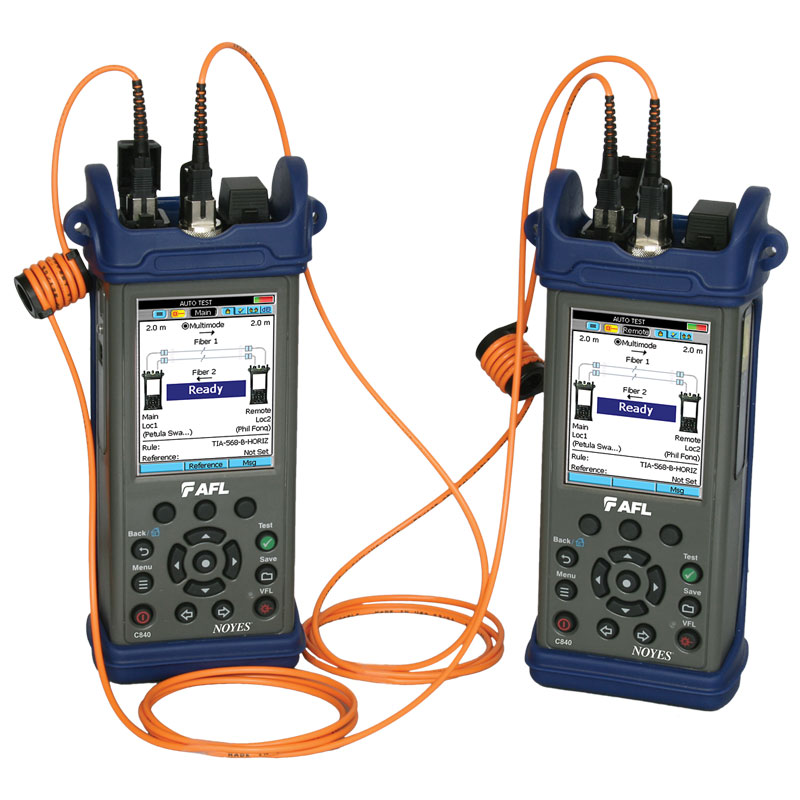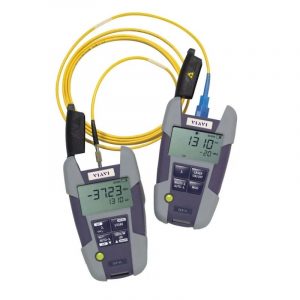Discover the Significance of Optical Fiber Testing in Modern Telecommunications
In the world of contemporary telecoms, the importance of optical fibre screening can not be overemphasized, as it acts as the foundation for making sure network reliability and performance. By executing routine testing procedures, drivers can preemptively recognize possible concerns such as signal degradation, thus protecting against disruptions that might verify pricey. Advanced strategies like Optical Time-Domain Reflectometry play a crucial role in this process, yet many may overlook the broader ramifications of these practices. What are the certain advantages that normal screening deals, and exactly how might it shape the future landscape of telecoms?

Understanding Optical Fiber Screening
Optical fibre testing is a crucial procedure in telecommunications that ensures the honesty and performance of fibre optic networks. This screening incorporates a variety of treatments developed to assess the physical and useful qualities of optical fibres - optical fibre diameter analyser. Trick criteria examined include optical power loss, data transfer capacity, and mistake area, which are essential for keeping high-quality interaction links
The screening process commonly entails the usage of customized equipment such as Optical Time-Domain Reflectometers (OTDR) and Optical Power Meters. OTDRs are employed to determine and identify faults, splices, and ports within the fiber, while power meters measure the transmitted light signal toughness to establish performance.
Additionally, screening is conducted at different stages, consisting of during setup, upkeep, and troubleshooting, to guarantee that the network satisfies sector requirements and functional demands. Conformity with standards set by companies like the International Telecommunication Union (ITU) and the Telecoms Market Organization (TIA) is paramount.
Benefits of Routine Testing
Regular screening of optical fibres yields various benefits that significantly enhance network dependability and performance. Among the main benefits is the very early discovery of possible issues, such as breaks or deterioration in the fiber, which can bring about costly downtime if left unaddressed (robotic vision). By identifying these problems proactively, telecoms service providers can lessen solution disturbances and make certain constant connection for their consumers
In addition, normal screening aids to keep the integrity of signal quality. As optical fibres age, their efficiency can be influenced by factors such as ecological problems and physical stress and anxiety. Regular analyses permit for the surveillance of signal loss and general transmission effectiveness, guaranteeing that the network operates at optimal levels.
Another substantial benefit is conformity with industry requirements. Regular screening supports adherence to regulatory needs, thus minimizing legal and economic dangers connected with non-compliance. Moreover, it enhances the general lifespan of the fiber infrastructure by promoting timely repair and maintenance.

Usual Evaluating Techniques
Examining optical fibres employs numerous methods to make sure the honesty and performance of telecommunications networks. Among one of the most usual methods is Optical anchor Time Domain Reflectometry (OTDR), which analyzes the whole length of the fibre by sending a pulse of light and determining the reflections brought on by blemishes or breaks. This approach provides comprehensive info regarding the location and seriousness of mistakes.
An additional widespread approach is using Optical Power Meters, which measure the quantity of light transferred with the fiber. This method aids establish the loss of signal strength, guaranteeing that it satisfies sector requirements. Furthermore, Visual Mistake Locators (VFL) are used to determine breaks or serious bends in the fiber by predicting a visible laser light into the cable.
Insertion loss testing is additionally critical, as it quantifies the loss of signal power arising from links and interlaces within the network. The usage of Polarization Setting Dispersion (PMD) screening evaluates the influence of fibre qualities on signal stability.
Each of these approaches plays an essential duty in preserving the efficiency and reliability of optical fibre networks, eventually adding to smooth telecommunications operations.
Effect On Network Efficiency
The honesty and efficiency of optical fibre networks straight influence general network efficiency. In modern-day telecommunications, the efficiency of information transmission relies greatly on the quality of the optical fibres look these up utilized. Any kind of destruction in the fiber's condition-- whether due to physical damages, contamination, or excessive flexing-- can bring about enhanced attenuation and signal loss, substantially impacting information integrity and speed.
Regular optical fibre testing is vital to identify and rectify potential issues before they show up as network failures or downturns. Methods such as Optical Time Domain Reflectometry (OTDR) and insertion loss screening allow service technicians to measure the performance of fibre links accurately. These examinations not just evaluate the physical problem of the fibres however likewise make certain compliance with industry requirements, thereby safeguarding the network's dependability.
Furthermore, a well-maintained optical fibre network contributes to reduced functional costs and boosted client complete satisfaction, as end-users experience less interruptions and greater information rates. Ultimately, the emphasis on extensive optical fiber testing techniques functions as a foundation for sustaining durable telecoms framework, making certain that provider can fulfill the expanding needs for bandwidth and connection in today's digital age.
Future Patterns in Examining
As we look ahead, advancements in technology are positioned to improve optical fiber testing in telecoms. The rise of automation and expert system (AI) is anticipated to enhance the effectiveness and precision of screening procedures. Automated screening systems can perform comprehensive evaluations with marginal human treatment, considerably reducing the potential for mistakes and expediting time-to-deployment.
Moreover, the assimilation of artificial intelligence formulas will certainly allow anticipating maintenance, enabling network service providers to predict possible problems before they escalate right into special info failures. This proactive approach not just enhances network dependability yet additionally enhances operational costs.
One more arising trend is the growth of portable screening devices that offer real-time analysis - optical fibre diameter analyser. These devices will empower service technicians to do on-site diagnostics rapidly, facilitating quicker resolutions and improving service quality
The expansion of 5G networks further necessitates the development of screening approaches. As bandwidth needs enhance, standard testing techniques might no longer are enough. Ingenious solutions such as optical time-domain reflectometry (OTDR) and progressed spooky analysis will certainly become essential in ensuring the integrity and efficiency of high-speed links.

Conclusion
In verdict, optical fiber testing is necessary for ensuring the honesty and reliability of modern-day telecoms networks. Normal screening techniques not only assist identify potential problems such as signal loss and faults however also contribute to boosted network performance and customer contentment. As the demand for seamless connection remains to grow, the fostering of innovative testing techniques will certainly play a crucial duty in preserving high-quality network criteria and supporting the evolving landscape of telecoms.